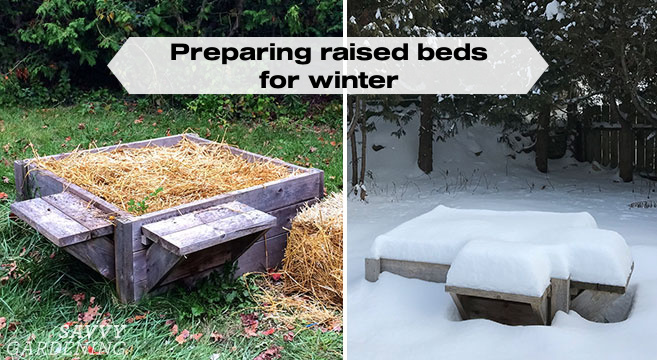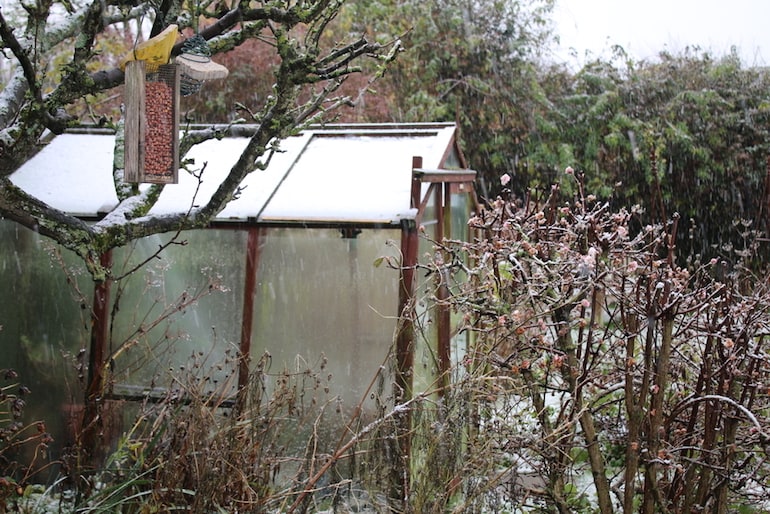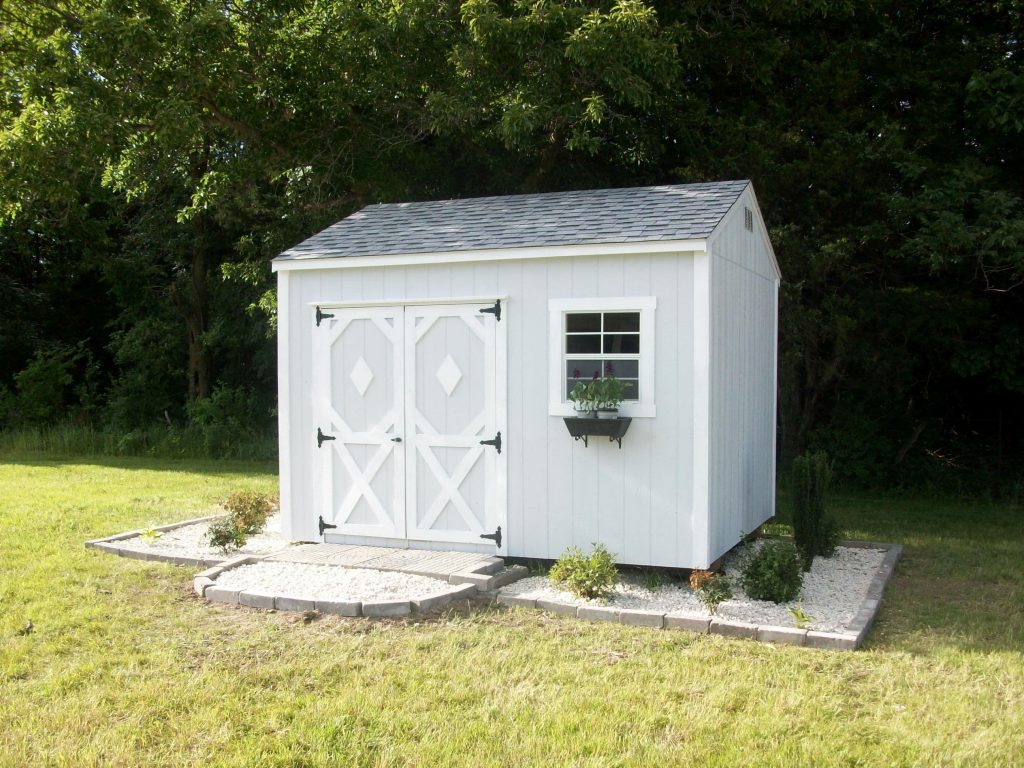Yes, you can keep plants in a shed over winter. Proper insulation, ventilation, and light are crucial for plant survival.
Storing plants in a shed during winter requires careful preparation. Ensure the shed has good insulation to maintain a stable temperature. Proper ventilation is essential to prevent mold and mildew. Light is another critical factor; consider using grow lights if natural light is insufficient.
Watering should be adjusted to the plant’s needs, avoiding overwatering. Using these strategies, you can successfully keep your plants healthy and thriving throughout the winter season. This approach helps protect delicate plants from frost and cold damage, allowing them to flourish when warmer weather returns.

Credit: savvygardening.com
Choosing Suitable Plants
Choosing suitable plants for your shed over winter is crucial. This decision impacts their survival and growth. Some plants thrive in cold, while others need warmth. Let’s dive into how to choose the best plants for your shed.
Hardy Vs. Tender Plants
Hardy plants can survive cold temperatures. They are ideal for winter sheds. Examples include:
- Pansies
- Hellebores
- Primroses
Tender plants need more warmth. They struggle in cold sheds. Examples include:
- Begonias
- Impatiens
- Geraniums
Knowing the difference helps in selecting the right plants.
Assessing Plant Needs
Each plant has specific needs. Assess these before moving them to your shed.
| Plant Type | Light Needs | Water Needs |
|---|---|---|
| Hardy Plants | Low to Medium | Low to Medium |
| Tender Plants | Medium to High | Medium to High |
Ensure your shed provides enough light. Some plants need bright light even in winter. Watering is also key. Overwatering can harm roots, especially in a cold shed.
Use these tips to choose the best plants for winter. Your shed can be a safe haven for them.
Preparing Your Shed
Keeping plants in a shed over winter can be tricky. Proper preparation of your shed is essential. This ensures your plants survive and thrive despite the cold weather.
Insulation Options
Insulation is key to maintaining a stable temperature. Consider the following insulation materials:
- Foam Boards: Easy to install and effective at retaining heat.
- Bubble Wrap: An affordable option that also lets in light.
- Fiberglass Insulation: Common in homes, but works well in sheds too.
Make sure to cover windows and doors. This prevents heat from escaping. Add weather stripping to seal gaps.
Ventilation Importance
Proper ventilation prevents mold and mildew. These can harm your plants.
Consider the following ventilation options:
- Vents: Install vents on opposite walls for cross-ventilation.
- Exhaust Fans: Help remove excess moisture from the air.
- Windows: Open windows on warm days to let fresh air in.
Monitor humidity levels. Keep them between 40-60%. Use a hygrometer to check.
By following these steps, your shed can be a safe haven for your plants during winter.
Lighting Requirements
Lighting Requirements are crucial for keeping plants in a shed over winter. Plants need light for photosynthesis, which is vital for growth and survival. Let’s explore how to meet these needs with natural and artificial light sources.
Natural Light Sources
Natural light is the best source of light for plants. It is free and effective. To maximize natural light:
- Place your shed where it gets the most sunlight.
- Use transparent or translucent roofing materials.
- Install large windows or skylights.
These steps can help your plants get enough natural light. But what if natural light is not enough?
Artificial Lighting Solutions
Artificial lights can supplement natural light. They can even replace it. Here are some artificial lighting options:
| Light Type | Benefits |
|---|---|
| Fluorescent Lights | Energy-efficient and affordable |
| LED Grow Lights | Long-lasting and customizable |
| Incandescent Lights | Good for warmth but less efficient |
For best results, use a timer to mimic natural daylight hours. This helps plants maintain their growth cycles.
Consider the light spectrum. Plants need blue light for growth and red light for flowering. Choose lights that offer a full spectrum for best results.
In summary, meeting the lighting requirements involves using natural and artificial light. This ensures your plants stay healthy during winter.

Credit: www.thompson-morgan.com
Watering Techniques
Keeping plants in a shed over winter requires special care. Watering is a key part of that care. Proper watering techniques can ensure plants survive and thrive. This section covers important watering tips.
Watering Frequency
Plants in a shed need less water during winter. The cold slows their growth. Check the soil every week. If the top inch is dry, it’s time to water.
Use a schedule to help you remember. Watering too often can harm the plants. Keep a log to track your watering routine.
Preventing Overwatering
Overwatering is a common mistake. It can lead to root rot and mold. Always check the soil moisture before adding water.
Ensure the shed has proper drainage. Use pots with drainage holes. Place a tray under each pot to catch excess water.
| Tips | Description |
|---|---|
| Check Soil | Press your finger into the soil. Only water if dry. |
| Use Less Water | Give small amounts of water. Avoid soaking the soil. |
| Drainage | Ensure pots have holes. Use trays to catch excess water. |
Remember, each plant has unique needs. Adjust your watering to fit each type. This ensures all your plants stay healthy over winter.
Temperature Control
Ensuring the right temperature is crucial for keeping plants in a shed over winter. Plants need a stable environment to survive the cold months. Let’s dive into some key aspects of temperature control.
Monitoring Temperatures
Keep a thermometer inside the shed. Check the temperature daily. Make sure it stays above freezing. Use a digital thermometer for accuracy. You can also get a thermometer with an alarm. This will alert you if temperatures drop too low. Here are some tips:
- Place the thermometer at plant level.
- Check morning and evening temperatures.
- Keep a log to track fluctuations.
Heating Solutions
There are several ways to heat your shed. Here are some options:
| Heating Solution | Pros | Cons |
|---|---|---|
| Space Heaters | Effective and quick | Can be expensive to run |
| Heat Mats | Good for seedlings | Limited coverage area |
| Insulation | Reduces heat loss | Initial installation cost |
Choose the best option for your needs. Make sure to follow safety guidelines. Never leave heaters unattended. Insulating your shed can also help. Use bubble wrap or foam boards for insulation. This will keep the warmth inside.
Proper temperature control ensures your plants survive winter. Monitor temperatures and choose the right heating solution. This way, your plants will stay healthy and thrive.

Credit: www.amazon.com
Pest And Disease Management
Winter can be a challenging time for plants stored in a shed. One of the major challenges is managing pests and diseases. Proper management ensures plants stay healthy and vibrant until spring.
Common Shed Pests
Several pests can thrive in sheds during winter. These pests can harm your plants.
- Aphids: Tiny insects that suck sap from plants.
- Spider Mites: Small arachnids that cause yellowing leaves.
- Slugs and Snails: Mollusks that chew on leaves and stems.
Preventative Measures
Taking steps to prevent pests and diseases can save your plants. Here are some effective measures:
- Regular Inspections: Check your plants weekly for any signs of pests or diseases.
- Proper Ventilation: Ensure your shed has good airflow to prevent mold and mildew.
- Cleanliness: Keep the shed clean and free of fallen leaves and debris.
- Natural Predators: Introduce beneficial insects like ladybugs to control pest populations.
- Isolation: Isolate any infected plants to prevent spreading.
By following these measures, you can protect your plants from common shed pests and diseases during winter.
Organizing Your Space
Keeping plants in a shed over winter requires smart organization. Your shed must be clean and well-organized. This ensures your plants stay healthy and safe. Let’s look at how to organize your space efficiently.
Shelving And Storage
Using shelves can save space. Install sturdy shelves along the shed walls. Make sure the shelves are strong enough to hold plant pots. Use adjustable shelves for different pot sizes. Store smaller items in bins or boxes. Label these bins for easy access.
- Install sturdy shelves
- Use adjustable shelves
- Store small items in labeled bins
Maximizing Space Efficiency
Maximize your space by using every corner. Hang hooks on walls for tools. Use vertical space for hanging plants. Consider stackable pots for more plants in less area. Keep walking paths clear for easy movement.
| Tip | Action |
|---|---|
| Use Corners | Place shelves or small tables in corners |
| Hang Tools | Install hooks on walls |
| Vertical Space | Hang plants or use stackable pots |
| Clear Paths | Ensure easy movement |
These tips help you create an efficient winter plant shed. Organize well and keep your plants happy.
Seasonal Maintenance
Keeping plants in a shed over winter requires careful seasonal maintenance. Proper care ensures plants survive the cold months and thrive in spring. This guide covers essential steps for maintaining plants in a shed during winter.
Regular Inspections
Regular inspections are crucial for plant health. Check plants weekly for signs of stress. Look for wilting, discoloration, or pests. Early detection prevents problems from worsening.
Ensure the shed maintains a stable temperature. Use a thermometer to monitor temperature fluctuations. Keep the temperature between 45°F and 55°F. Make sure the shed has adequate ventilation.
Inspect the soil moisture levels. Overwatering can lead to root rot. Water plants only when the soil feels dry. Use a moisture meter for accuracy.
Preparing For Spring
Start preparing for spring in late winter. Gradually increase the light exposure. Move plants closer to windows or use grow lights. This helps plants adjust to longer daylight hours.
Begin fertilizing lightly. Use a balanced, water-soluble fertilizer. Follow the package instructions for dosage. This promotes healthy growth as temperatures rise.
Repot plants if needed. Check for roots growing out of the drainage holes. Choose a pot that is one size larger. Use fresh potting soil to provide nutrients.
Prune dead or damaged leaves and stems. This encourages new growth and prevents disease. Use clean, sharp pruning shears.
| Task | Frequency |
|---|---|
| Inspect plants | Weekly |
| Monitor temperature | Daily |
| Check soil moisture | Weekly |
| Increase light exposure | Late winter |
| Fertilize | Monthly |
| Repot if needed | Spring |
| Prune | Spring |
Frequently Asked Questions
Can You Put Plants In A Shed For Winter?
Yes, you can put plants in a shed for winter. Ensure the shed is insulated and provides sufficient light.
Will An Unheated Shed Protect Plants From Frost?
An unheated shed can provide some protection from frost. It shields plants from direct exposure to freezing temperatures.
Can You Overwinter In A Shed?
Yes, you can overwinter in a shed with proper insulation, heating, and ventilation. Ensure it meets safety standards.
Can Plants Survive In The Garage In Winter?
Yes, plants can survive in the garage during winter if it’s insulated and temperatures stay above freezing. Ensure proper light and occasional watering.
Conclusion
Protecting plants in a shed over winter can be a practical solution. Ensure proper insulation and ventilation for success. Use frost cloths and maintain moisture levels. Monitor temperatures regularly. With these steps, your plants can thrive until spring. Keep your shed organized and check on your plants frequently for best results.

My mission is to help you bring the beauty of nature indoors with expert advice, detailed plant care guides, and creative design ideas.





Leave a Reply